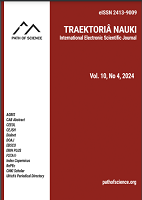Design and Construction of a Low-Cost Hemoglobin Electrophoresis (Genotype) Machine for the Diagnosis of Inherited Genotype Disorder
Design and Construction of a Low-Cost Hemoglobin Electrophoresis (Genotype) Machine for the Diagnosis of Inherited Genotype Disorder
Author(s): Oluwasegun Temitope Adefemi, Vincent Andrew Akpan, Jessica Temilola Ovabor, Olabisi Glory Adekoya, Buniechukwuenu Emmanuel MbamaluSubject(s): Energy and Environmental Studies, Experimental Pschology, Clinical psychology, Applied Sociology, Health and medicine and law
Published by: Altezoro, s. r. o. & Dialog
Keywords: Hemoglobin; Electrophoresis; Cellulose Acetate Paper; Hemoglobin Electrophores; Hemoglobinopathy; Validation; Hemoglobinelectrophoresis; Genotype;
Summary/Abstract: Designing and constructing a low-cost haemoglobin electrophoresis (genotype) machine using cellulose acetate paper is an exciting project that underscores using locally sourced materials and resources to achieve its aims. The technique of haemoglobin electrophoresis is adequately harnessed to detect and evaluate various types of haemoglobin disorder, which include sickle anaemia and many other abnormal genotypes. The cost of acquisition and maintenance of the equipment is made available at a comparatively reduced rate by using materials and components that are remotely accessed to construct the haemoglobin electrophoresis machine, which is efficient and cost-effective. The design and construction team incorporated a power supply unit, buffer solution (tris), cellulose acetate paper, filter paper, electrodes (anode and cathode), switch, cable, capacitor, fuse, and other necessary components. The successfully constructed genotype machine was validated for effective and efficient diagnostic purposes for detecting different types of haemoglobin genotypes by testing it using several specimens of known haemoglobin genotypes of different types. The researchers compared the results from this testing process with those obtained from a standardised haemoglobin genotype machine. The test result obtained from this verification and validation process showcases that the low-cost haemoglobin electrophoresis ma-chine using cellulose acetate paper can effectively separate, distinguish and identify different haemoglobin variants such as HBAA, HBAS, HBAC, HBCC, HBSS, HBSC, HBF, HBAC, HBAF with few limitations. The drawbacks include the inability to distinguish other haemoglobin genotype variants that co-migrate with HBAA, HBAS, HBAC, HBCC, HBSS, HBSC, HBF, HBAC, and HBAF when exposed to the electric field in the electrophoretic chamber. Examples of such haemoglobin genotypes include HB E, HB D, HB O, and HB G, with many other haemoglobin variants having exact migration patterns on the cellulose acetate paper when subjected to the electric field. However, this limitation can be overlooked as these haemoglobin variants are not peculiar to people in this part of the world (Nigeria) where the project has been carried out. Hence, the design and construction of this haemoglobin electrophoresis machine will give people from lowresource areas easy access to carry out the test and enhance prompt detection and management of hemoglobinopathies.
Journal: Traektoriâ Nauki
- Issue Year: 10/2024
- Issue No: 8
- Page Range: 6038-6055
- Page Count: 18
- Language: English

